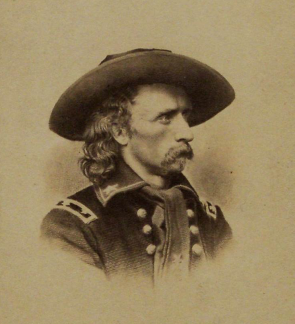The Battle of the Little Bighorn: On This Day, June 25
Posted by Kristin Miller on Saturday, 06/25/2016

The Battle of the Little Bighorn looms large in American history. Civil War hero and larger-than-life general George Custer and more than two hundred of his men died along Montana’s Little Bighorn River. On June 25 and 26, 1876, Custer and men of the 7th Cavalry faced several thousand Lakota and Cheyenne warriors. It was one of the Indians’ last victories. Today, the battlefield is a National Battlefield and place of reflection containing both Custer National Cemetery and an Indian Memorial dedicated in 2003.
General Custer had a long history with the Cheyenne. The Gilder Lehrman Collection includes a report on the Battle of Washita on November 27, 1868, which pitted US Army troops commanded by General George Custer against the Southern Cheyenne. The Cheyenne at Black Kettle’s village were slaughtered, and the casualties on both sides were gruesome. Custer returned to the village and submitted the following report:
Excerpt
I proceeded to the battle field, early on the morning of the 11th. Indians had evidently paid a hurried visit to the scene of the late Conflict. The bodies of nearly all the warriors killed in the fight had been concealed or removed while those of the Squaws and Children, who had been slain in the excitement and confusion of the first charge as well as in self defense were wrapped in Blankets and bound with [lariats] preparatory to removal and burial. Many of the Indian dogs were still found in the vicinity lately occupied by the lodges of their owners; they probably subsisting on the bodies of the ponies that had been killed and then covered several acres of ground near by. As ten days had then elapsed since the battle and scores of Indian bodies still remained unburied or unconcealed some idea may be had of the precipitate haste - with which the Indians abandoned that section of country. A thorough examination of the immediate battle ground failed to discover any thing worthy of special report, except that Indian bodies were found which had not previously been reported in my first dispatch, and which went to prove, what we are all aware of now, that the enemy’s loss in killed warriors far exceeded the numbers (103) one hundred and three) first reported by me.